Optimal Fishing Times: When to Cast Your Line for Success


Overview of the Topic
Fishing is a time-honored tradition, bridging the gap between sport and sustenance while anchoring cultures worldwide. Understanding optimal fishing times – the moment when fishes are most likely to bite – is crucial for both professional anglers and casual fishers alike. This concept melds the science of ecology with practical experience, creating a roadmap that not only enhances the fishing yield but also underscores the importance of sustainable resource management. By diving into the dynamics of light patterns, fish behavior, and environmental cues, anglers can strike at the opportune moments, contributing to healthier aquatic ecosystems.
Prelude to Key Natural Resource
Fishing is deeply intertwined with the health of aquatic habitats. When one considers the dynamics of this natural resource, it quickly becomes evident that various factors influence fish populations and their behaviors. Water temperature, seasonal changes, and light conditions are just a few of the variables that create a tapestry of ecological interactions. Anglers who grasp these elements are more likely to enjoy fruitful experiences, ultimately leading to better practices supporting environmental stewardship.
Background Information
The significance of knowing when to fish extends beyond personal gain. As generations of anglers have engaged with and altered aquatic environments, their actions have echoed throughout time. Overfishing and habitat degradation have presented challenges to fish populations, making it ever more critical to employ sustainable practices. This discussion is not merely about catching fish; it’s about fostering a healthy coexistence between humans and nature, ensuring that fishing remains a viable pursuit for future generations.
Current Status and Challenges
Despite humanity's longstanding relationship with fishing, numerous challenges loom on the horizon.
Environmental Changes: Climate change rapidly alters aquatic systems, affecting how fish behave. Temperature shifts may push certain species to migrate, leaving traditional fishing grounds less fruitful.
Pollution and Habitat Loss: Chemical runoff, plastic waste, and industrial activity can disrupt breeding patterns and ultimately question the viability of fish populations.
Some of the primary challenges facing fishing today include:
- Overfishing leading to depleted stocks
- The oscillation of water quality due to human activities
- Species extinction resulting from habitat destruction
In light of these issues, comprehension of optimal fishing times can act as a counterbalance, helping to inform better practices which respect both the fish and their environments.
Sustainable Solutions
While threats persist, proactive measures exist that can steer fishing practices towards sustainability.
Understanding Seasons: Adapting fishing methods based on seasonal variations enhances not only catch rates but supports regeneration efforts. Anglers who fish with awareness of spawning cycles help maintain fish populations.
Using Local Knowledge: Traditional ecological knowledge often harbors secrets overlooked by modern practices. Engaging local anglers to understand their observations can deepen insights into fish behaviors.
Positive examples to draw from include government initiatives that enforce catch limits and promote responsible fishing practices. For instance, agencies like the National Oceanic and Atmospheric Administration (NOAA) consistently develop regulations grounded in sound science, ensuring that fish populations remain robust.
Impact and Importance
The effects of fishing are felt at multiple environmental levels. Healthy fish populations are indicators of thriving ecosystems. In contrast, a decline in fish species signals an imbalance that affects not just fish, but entire watery habitats that rely on these species for survival. Conservation efforts go hand-in-hand with sustainable fishing practices, as they foster resilience against climate variances and human impact.
In essence, harmonizing fishing with conservation ensures that not only do anglers enjoy richer experiences today but that the legacies of our waters flourish for the generations yet to come. This marriage of understanding and respect holds the key to successful fishing while preserving vital ecosystems.
"Fishing is much more than catching fish. It’s a practice of balance between enjoyment and responsibility."
For further learning and responsible fishing practices, visit resources such as NOAA Fisheries, Fish and Wildlife Service, and American Sportfishing Association.
Understanding Fish Behavior
Understanding fish behavior is essential for anyone looking to improve their fishing success. Fish are not merely random creatures; their activities often follow specific patterns influenced by various environmental factors. By gaining insight into these behaviors, anglers can tailor their strategies to match the natural inclinations of fish, thus significantly increasing their catch rates while also fostering sustainable practices.
The Role of Light
The importance of natural light changes
Light plays a pivotal role in the daily lives of fish; it’s not just a detail of nature, but a driving force behind their activities. As the sun rises and sets, the intensity and angle of natural light alter the landscape of underwater life. Fish are generally more active during dawn and dusk when the light is low, and their natural predatory instincts are heightened. This phenomenon is not simply about visibility; rather, it's about how the fish perceive their surroundings and vulnerable prey.
Natural light changes create an environment conducive to feeding, as it offers cover to both predators and prey alike. Interestingly, the clarity of water interacts with light, which can either enhance or diminish visibility—fishing tactics must pivot accordingly.
- Key characteristic: Fish respond sympathetically to the rhythmic dance of light, often congregating at feeding spots during these changes.
- Advantages: Knowing when to take advantage of these light shifts can lead to successful outings.
How fish react to varying light conditions
Fish respond to varying light conditions in complex ways. Different species have evolved to thrive under specific lighting circumstances. For instance, some prefer brighter conditions while others find safety in the shadows created by trees or rocks. Understanding how different fish species react to light is crucial for planning effective fishing trips.
- Key characteristic: Many fish tend to stay closer to the bottom or seek cover when the sun shines excessively.
- Advantages: Tailoring bait and lures to the conditions can result in higher success rates.
Feeding Patterns
Peak feeding times throughout the day
Feeding patterns are highly predictable; certain times of day see fish actively foraging for food. Observations suggest that fish are often most eager to feed just before dawn and just after dusk, aligning their routines with the availability of light. These peak feeding times correspond not only to the light cycles but also to the activity of smaller prey fish.
- Key characteristic: The early morning and late evening are prime times when fish are likely to strike at baited lines.
- Advantages: Matching your fishing schedule to these peak times can lead to a much more fruitful experience.
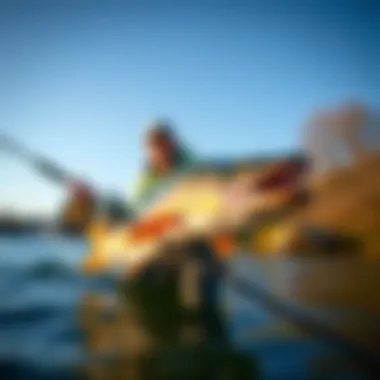
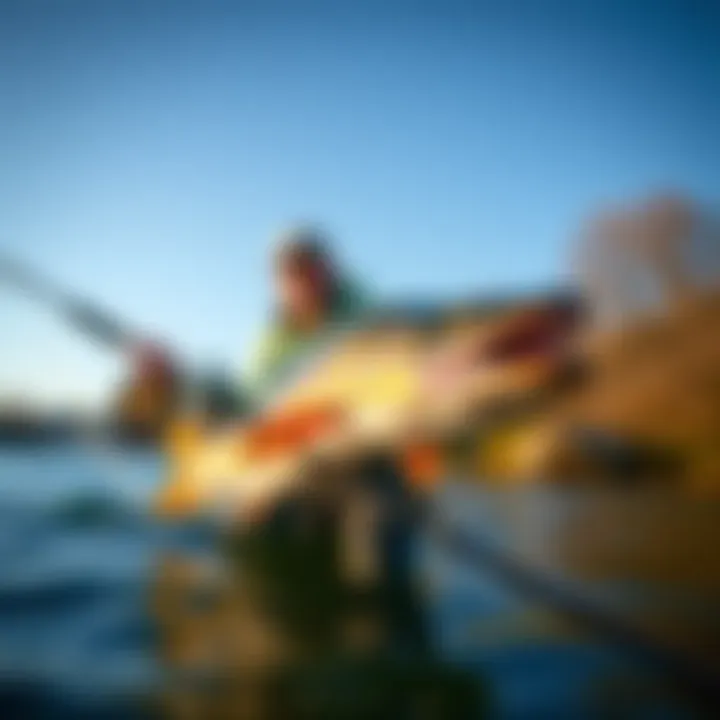
Influence of tides on fish behavior
The influence of tides on fish behavior is a fascinating aspect of angling. Tides create shifts in water levels and currents, which can affect the availability of food sources. When tides rise and fall, they often push nutrients and baitfish toward shorelines, drawing larger predatory fish to these areas. This can lead to spectacular fishing opportunities during tide changes.
- Key characteristic: Fish are influenced by tidal patterns; they tend to feed in more plentiful areas coinciding with tidal movements.
- Advantages: Understanding the tidal schedule can help anglers plan their outings for optimal fishing success.
"The best fishermen are not just skilled; they are observant, reacting wisely to the behavior of fish and the dance of nature around them."
In sum, comprehending fish behavior—shaped by light, feeding patterns, and tidal influences—greatly enhances the fishing experience. Awareness of these factors equips anglers to make informed choices, ultimately blending successful fishing practices with respect for aquatic ecosystems.
Time of Day Analysis
Understanding the best times for fishing can be the difference between an empty cooler and a bountiful catch. The lighting of the day, along with fish behaviors, plays an enormous role in determining when anglers should cast their lines. By considering time of day, enthusiasts can tailor their fishing strategies to align with peak activity periods.
Fishing isn’t just a hobby; it’s an art. Many anglers have their own techniques for identifying when to fish. For instance, the time of day significantly affects fish as they change their feeding and activity patterns. This knowledge can enhance the fishing experience, ensuring both fun and success.
Early Morning Opportunities
Species most active at dawn
As day breaks, certain fish species such as bass, trout, and pike become more active. Those early hours, just after dawn, are crucial for fishing. Pastry-like, they rise up to the surface, stirring up the waters and their surroundings. This early activity is tied to their natural instincts as they hunt for smaller prey. Targeting these species at dawn can yield a significant reward, and anglers can benefit from this timing.
One key characteristic of these species is their hunger, driven by hunger after a long night. They are known to be opportunistic feeders, making them a popular choice for anglers. However, it’s important to remember that this time window can be short, as fish may return to deeper waters as the sun rises, proving both an advantage and disadvantage in the fishing strategy.
Best techniques for early fishing
Having effective techniques in the early morning can set the stage for a successful day. Strategies like using topwater lures or live bait work well. The sound and action generate excitement and mimic the movement of prey. Casting your line softly, allowing for a gentle entry into the water, can be key. This eases fish into a feeding frenzy and allows for a more natural appearance in the water.
The main feature of early fishing is often the calmness. Fewer boats and other distractions mean fish feel less wary. However, the challenge lies in the limited time frame. Anglers need to seize the moment and be prepared to act when conditions are right.
Midday Challenges
Temperature impacts on fish activity
As the sun climbs, the temperature increases, and fish behavior shifts. Many fish species slow down, seeking cooler, deeper waters. This drop in activity is often a natural response to warmer temperatures. The clarity of water also plays a role, as warmer water can lead to lower oxygen levels, discouraging fish from being active.
Midday presents a stark contrast to morning—while you may experience decreased fish activity, it can force anglers to adapt. Anglers can use knowledge about temperature preferences to their advantage, as certain species might still be active if the temperature aligns well.
Strategies for fishing in high sun
To maximize opportunities during high sun, adjusting tactics is a must. Seeking shaded areas or underwater structures becomes vital. Fish often hover near these places to avoid direct sunlight. Consider using heavier lures that sink deeper or a slow technique for your retrieval to entice fish that may be more lethargic.
Experimenting with different baits can also yield surprising results. By matching the bait with the type of fish actively seeking shelter, anglers can still find success even in challenging conditions. Retrieving deeper, where the water is cooler, can turn midday from a challenge into a productive session.
Evening Fishing Dynamics
Fish behaviors during twilight
When the sun begins to set, fish often transition back to a more active state. The twilight hours can be a prime time, as fish take advantage of the fading light to hunt for food. Species like trout and catfish exhibit increased feeding behaviors, making evenings an optimal time for fishing.
The change in light influences fish perception, enhancing their need for food and propelling them towards the surface. A field of colors dancing in the water can trigger feeding frenzies. Anglers can find it truly exhilarating witnessing this action, but timing is key; if the sun sets too fully, fish may retreat back to deeper waters, making it an unpredictable but exciting hunt.
The role of temperature drop
As evening sets in and the temperature drops, fish respond by moving closer to the surface again. This drop in temperature not only signals a return to feeding but also invites angler opportunity. The night air might cool the water’s top layer, drawing fish up as they seek comfortable swimming conditions.
It's essential for anglers to understand this dynamic—while this period can yield many bites, it can also be fleeting. Employing lures that give off vibrations or colors appealing later in the day can augment chances of a successful catch. Fish are instinctively drawn to movement, making strategic bait choices crucial.
Night Angling Insights
Species that thrive after dark
Night fishing opens up a whole new realm of possibilities. Species such as catfish, walleye, and certain types of bass often thrive in darker conditions. These species tend to become more active as light diminishes, helping them feel shielded from predators and more willing to feed. Knowing this makes night fishing a thrilling experience where diverse fishing opportunities present themselves.
One distinct quality of nighttime fishing is the sensory enhancement—it’s more about sound and vibration than sight for both fish and anglers. Therefore, employing lures that create noise or even attract nocturnal prey can lead to great success. However, being aware that some species are nocturnally aggressive while others become more reserved is essential to your strategy.
Safety considerations for night fishing
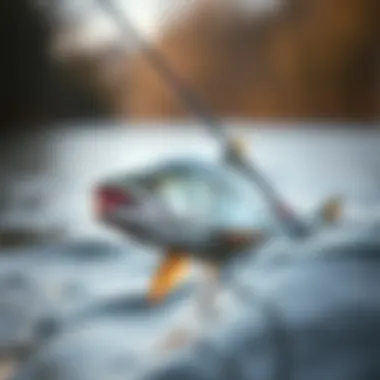
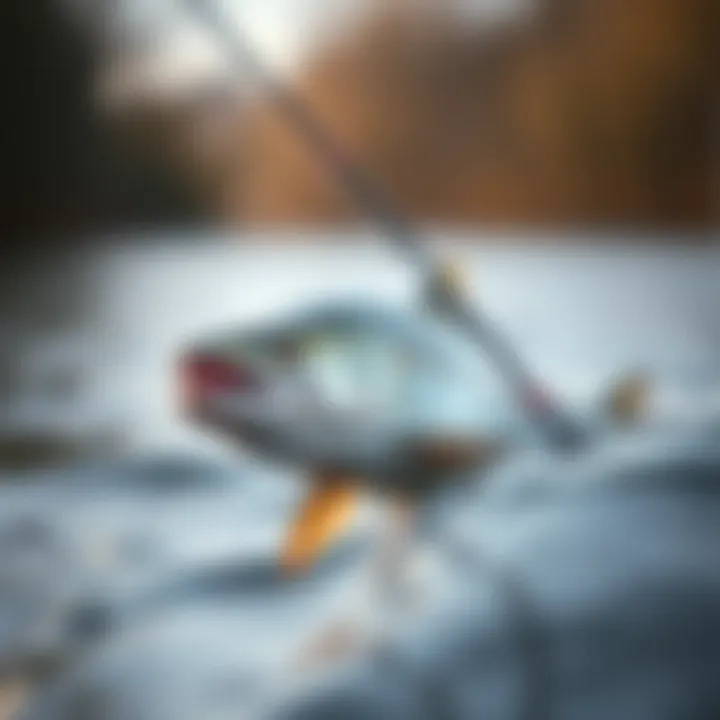
While nighttime angling can be rewarding, it does come with increased risks. Having the right equipment and safety measures in place is essential. Proper lighting, such as headlamps or glow sticks, assists visibility not just for the angler but also helps in identifying gear and handling catches.
An awareness of surroundings is crucial—navigating water bodies at night can be tricky without visual markers. Bringing a buddy along adds both safety and a social element to the experience, ensuring that held conversations can enhance the enjoyment of nighttime fishing. The added thrill should always be paired with a commitment to safe practices.
Seasonal Impacts on Fishing
Understanding the seasonal impacts on fishing is crucial for anglers aiming to optimize their catch rate and ensure sustainable practices. Each season brings its own set of challenges and characteristics that influence fish behavior, accessibility to various fishing locations, and the effectiveness of certain techniques. The nuances of these seasonal changes enable enthusiasts to not only enhance their skills but also to respect the delicate balance of aquatic ecosystems. By knowing when to fish based on seasonal cycles, anglers can significantly improve their likelihood of success and contribute to responsible resource management.
Spring Awakening
Behavioral changes as temperatures rise
As the chill of winter fades, fish begin to stir as water temperatures rise in spring. This change triggers a range of behavioral adaptations. Fish become increasingly active, which enhances their feeding opportunities. The urge to spawn also compels many species to migrate toward shallower waters, often falling prey to fishing lures that mimic their natural forage. This seasonal shift is a key characteristic that makes spring a particularly alluring time for anglers. The freshly warming waters cause fish metabolism to spike, making them more willing to chase after bait.
Interestingly, various factors come into play during this awakening. For instance, some species, like largemouth bass, will gravitate towards vegetation where they can hide and ambush prey. This pattern is beneficial for those looking to specific locations to cast their lines, as it denotes areas with higher fish activity. Understanding this dynamic offers an advantage, allowing anglers to target spots where fish have gathered during their spawning rituals.
Specific fishing spots to target
Identifying specific fishing spots during this time can make all the difference. Shallow bays, rivers with inflowing warmer water, or areas close to spawning beds are more likely to yield satisfactory catches. The typical characteristic of these spots is their proximity to food sources, increased sunlight exposure, and cover from predators. Therefore, fishing near structure, like fallen trees or rocks, can boost your chances considerably.
Part of the unique appeal of spring fishing is how diverse and plentiful fish can be. When targeting these areas, ensure you have the right bait, often mimicking what local fish are currently feeding on. However, with opportunities often comes increased competition from other anglers. Thus, patience and careful planning remain key elements for success.
Summer Heat
Adapting tactics in warmer months
As summer settles in and temperatures soar, adaptability becomes the name of the game. Fish seek deeper, cooler waters, often pushing them much deeper than they would go in spring. This necessitates modifications to your equipment and approach. A change in tactics, such as using specialized lures, is often required. Fish are generally lethargic during the hottest part of the day, which makes fishing during cooler intervals imperative.
The uniqueness of summer fishing comes from identifying specific patterns, like early morning feeding frenzies. Major species may become more active just before the sun rises. Thus, adjusting your schedule to take advantage of these peak times can yield results. This adaptability is a great asset to anglers prepared to switch things up depending on the weather and water conditions.
Early and late hour excursions
Timing is everything when it comes to early and late hour excursions in summer. Early mornings and late evenings often herald the wish in anglers’ hearts, as fish are more likely to be closer to the surface during these times. The quieter ambiance and reduced boat traffic make for a more favorable fishing environment.
Key characteristics of these excursions involve low light penetration, which tends to illicit stronger feeding responses from predatory fish. This behavioral quirk makes both the early dawn and dusk hours prime opportunities to reel in a good catch. Keep in mind, though, that patience is crucial—sometimes, it’s a waiting game even during these optimal conditions.
Autumn Adjustments
Preparing for cooler water temperatures
As the days shorten and the air cools, water temperatures begin to decrease, inducing fish to change their behavior once more. This cooling trend necessitates adjustments in strategies, as fish tend to gather in schools to prepare for the coming winter. They also become less active, which can pose challenges for anglers. However, this season also opens opportunities for targeting specific species that thrive in cooler waters.
Adaptation to cooler temperatures is a common tactic, especially for targeting fish like trout and pike that become more active during the autumn. It’s important to keep equipment ready for these transitions; proper layering in clothing and suitable bait can enhance the experience. The unique feature of hunting for fish in cooler waters is how they often become concentrated, offering a beneficial chance to capture more fish in limited spots, as schools consolidate before winter.
Migration patterns of fish
Autumn marks significant migration patterns among various fish species, serving as a fascinating aspect of this season. Species often move toward deeper waters or lake mouths, where they seek refuge from the changing environment and prepare for winter. Documenting these movements is essential, as it affects where and how to fish effectively.
The relationship between migration and catch success during autumn provides a unique advantage for seasoned anglers. It’s not just about knowing when to fish but also identifying the right spots where fish traffic is high due to these migrations. For instance, pursuing salmon at their spawning routes offers an exciting and rewarding challenge during this period, though it may not be without its complications, like increased competition but it's often worth the trouble.
Winter Challenges
Strategies for ice fishing
When winter arrives, fishing can appear daunting; however, ice fishing, in particular, opens up a distinctive world for anglers ready to brave the elements. Strategies for successfully fishing through ice can include selecting the right gear—ice augurs, suitable bait, and winter clothing stand at the forefront. Understanding how fish behave beneath the ice—often resting or moving less frequently—can dictate a successful expedition.
This season truly requires knowledge and preparation to enhance chances. The potential advantage lies in fewer fishing competitors and the opportunity to tap into schools of fish congregating under the ice. Fish often gather tightly, which can maximize your catch rate when approached correctly.
Species that remain active
Despite the harsh conditions, certain species remain relatively active throughout the winter months. Fish like northern pike and trout adapt their behavior during this time, allowing anglers to connect with them even when the rest of the waterway is less busy. Highlighting these active species is essential, as it underlines the rewarding potential of winter fishing.
The unique feature of targeting these winter-active species is the stark contrast in approach required compared to warmer months. Precision becomes key, with bait action potentially needing to be slowed down significantly to match the lethargic movements of colder fish.
In summary, adapting strategies according to the seasonal context can help any angler increase their success and contribute to sustainable practices. Each season holds its distinct challenges and rewards, making the experience rich and fulfilling.
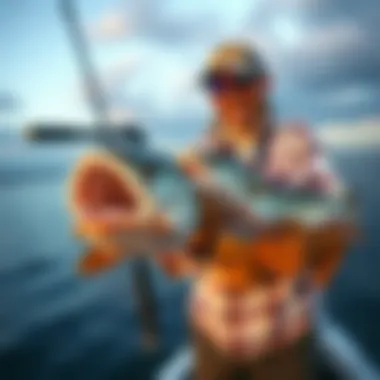
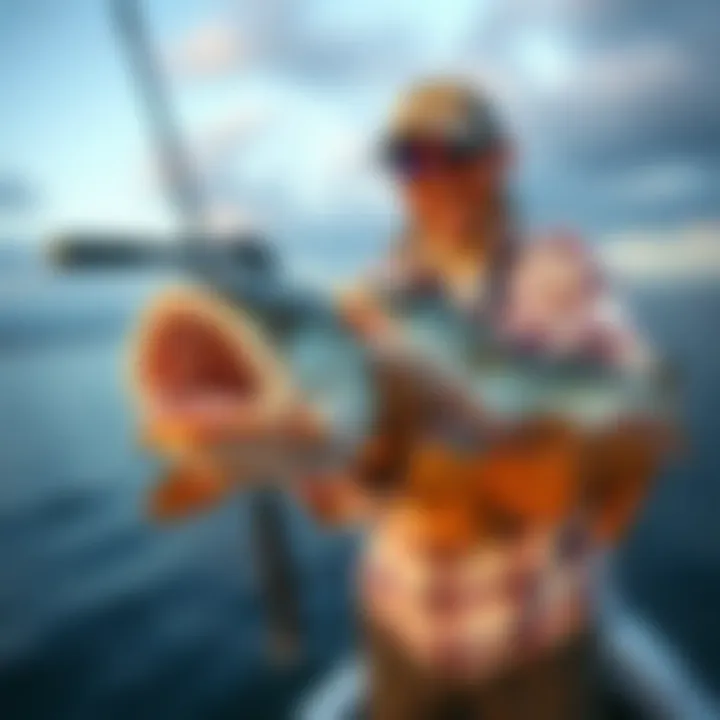
Influence of Environmental Factors
Fishing isn't just about casting a line and hoping for the best; it's an intricate dance with nature. Understanding the influence of environmental factors can dramatically enhance your fishing success. Elements like weather patterns, water quality, and temperature play crucial roles in determining when and where fish will be most active. These factors affect fish behavior, feeding habits, and movement; hence, angling without considering them might mean missing the boat—quite literally.
Weather Conditions
Effects of rainfall on fishing opportunities
Rain is often a misunderstood friend in the world of fishing. While many anglers might shy away from wet weather, the truth is that rainfall can kick off a feeding frenzy. Rain introduces run-off into water bodies, stirring up nutrients and attracting bait fish, which in turn lures in the predators. The increased oxygen levels from rain can also activate fish, particularly species like bass and trout.
Rainy days often lead to more successful fishing outings. It’s a favorite time for dedicated anglers, particularly just before a storm, when fish tend to be more active. One reliable trick among seasoned fishers is to hit the waters shortly after a downpour, especially in the early evening.
However, there is a flip side. Heavy rainfall can muddy waters, making it tough to spot fish or lure them towards your bait. Be mindful of the rainfall duration and intensity; a gentle drizzle may be a boon, but a torrential downpour could spell trouble.
Wind conditions to consider
Wind can be a mixed bag when it comes to fishing. On one hand, it can create ripples on the water surface, making it harder for fish to spot anglers. On the other hand, wind stirs up the water and increases oxygen levels, which can invigorate fish feeding. Certain species of fish, like pike and muskie are known to prefer windier days as they hunt small prey hiding in the churned-up waters.
The pivotal point to grasp is that you should pay attention to the wind direction. Fishing downwind can often yield better results, as turf churned by the wind pushes food sources closer to your bait. It’s essential to calibrate your tactics based on wind conditions; if it’s calm, you may need to rethink your approach. The unique characteristic of windswept banks can sometimes hold more fish, especially in shallow waters.
Water Quality and Temperature
Impact of water clarity on fishing success
Water clarity directly impacts fishing success; clear water means fish are often more cautious and can see the bait easily, while turbid water may create an advantage for anglers using brighter or noisy lures. Fish are more likely to venture closer to the shore or into shallow regions in murky water, as their ambush tactics come into play. You could say muddy waters can make for a big catch if you know where to look.
To enhance your chances, think about using topwater lures when fishing in clearer conditions, while opting for darker or more vibrant lures in murky waters. Understanding how clarity affects fish behavior is essential to develop a successful angling strategy, ensuring you’re not left empty-handed.
Optimal temperature ranges for various species
Temperature acts like a thermostat for fish activity, shifting their preferences as seasons change. Each species has its sweet spot; for example, warm-water species like bass typically thrive around 75°F, while cooler-loving trout favor temperatures around 55°F. These ranges aren't just suggestions; they are critical for successfully targeting species.
When temperatures drop below or rise above these ranges, fish often become lethargic and less inclined to strike at bait. Understanding these optimal temperature thresholds allows anglers to plan their trips for maximum action. The unique feature of temperature ranges means dedicated anglers can predict fish locations accordingly; during summer heat waves, for instance, fish often seek cooler waters near the bottom of lakes or in shaded areas.
Fishing, at its heart, is a pursuit that combines knowledge, patience, and respect for nature. By delving into these environmental factors, you'll not only up your chances of landing a prized catch but will also be contributing to a healthier ecosystem.
Practical Considerations for Anglers
When it comes to fishing, understanding the practical considerations can shape your overall experience and success on the water. Whether you are a seasoned angler or just starting your journey, knowing the rules and having the right equipment under your belt can make all the difference. In this segment, we’ll delve into two crucial areas: local regulations and choosing the right gear. These elements are not just icing on the cake; they are central to fostering responsible angling and enhancing your effectiveness on the water.
Local Regulations and Policies
Understanding catch limits
When you think about fishing regulations, catch limits emerge as a pivotal aspect. These limits are established to maintain fish populations and prevent overfishing. Understanding these limits is crucial for a few reasons. First, they help ensure that you are not unintentionally harming the ecosystem. By knowing how many fish you can take home after a day on the water, you contribute to a sustainable fishery. Many regions have specific rules about the sizes and quantities of different species you can catch, and being familiar with them means you won’t face penalties.
A clear characteristic of catch limits is that they are often put in place based on scientific research. This includes assessments of fish stocks and ecosystem health. Adhering to these limits is not only legally wise but also a reflection of responsible fishing practices. Ignoring them can lead to severe consequences—not just for the environment, but potentially for your pocket as well, with hefty fines in many regions.
While there might be a bit of a learning curve at first, gaining knowledge about these limits turns out to be really beneficial for your long-term fishing adventures. Doing a bit of homework on the specific regulations relevant to where you’ll be fishing can enhance your experience significantly.
Importance of sustainable practices
Next up is sustainability in angling. Emphasizing sustainable practices is integral for anyone who enjoys the sport of fishing. This isn't just good for the fish, but also beneficial for you as an angler. By practicing sustainability, you help ensure that future generations can enjoy fishing as much as you do. Simple actions like using barbless hooks, practicing catch and release, and respecting local habitats can contribute significantly to conservation efforts.
The key characteristic of adopting these practices is in their demonstrable impact on fish populations and aquatic ecosystems. For instance, the practice of catch and release has become increasingly popular among anglers who are conscious of their influence on fish stock health. Sustainable fishing is a concept that resonates with not only conservationists but also those who want to experience fishing without the guilt of depleting resources.
The unique feature of sustainability lies in its dual philosophy of enjoyment and responsibility. Acknowledging it doesn’t just align your fishing habits with ecological well-being, but it can also elevate your own enjoyment of the outdoor experience. Knowing that you are fishing with a commitment to conservation can be quite fulfilling.
Choosing the Right Gear
Equipment tailored to specific times and conditions
Choosing the right fishing gear can often feel like navigating a maze. Having equipment tailored to specific times and conditions is a game-changer that directly influences your success rate on the water. Different times of day and varying environmental conditions mean that the equipment you use should be suited accordingly. Early morning tactics differ vastly from evening strategies, and each scenario may call for particular rods, lines, or bait.
A significant characteristic of suitable gear is its adaptability. Let's say you’re fishing in a cold spring morning. You might need different lures or bait compared to fishing in the heat of summer. Therefore, fine-tuning your gear selection for the conditions can make your fishing trips not just more successful but also more enjoyable.
One unique aspect is that certain types of rod and reel combinations are designed with specific species in mind, enhancing your chances of landing that particular catch. While knowledge about the specific equipment may take some time to acquire, the overall benefits in your fishing success—alongside the thrill of working with the right gear—are well worth the effort.
Essential accessories for successful fishing
Last but not least are the essential accessories for successful fishing. These are often the unsung heroes of a well-planned angling expedition. Beyond your basic rod and reel, accessories like tackle boxes, fishing nets, and even the seasonal bait can turn a decent fishing trip into a memorable one.
The importance of having these accessories is multi-faceted. They not only help keep your setup organized but also ensure you are prepared for unexpected challenges. For instance, wind and weather can change quickly, and having the right gear, such as quick-drying clothing or waterproof bags, can save your day.



